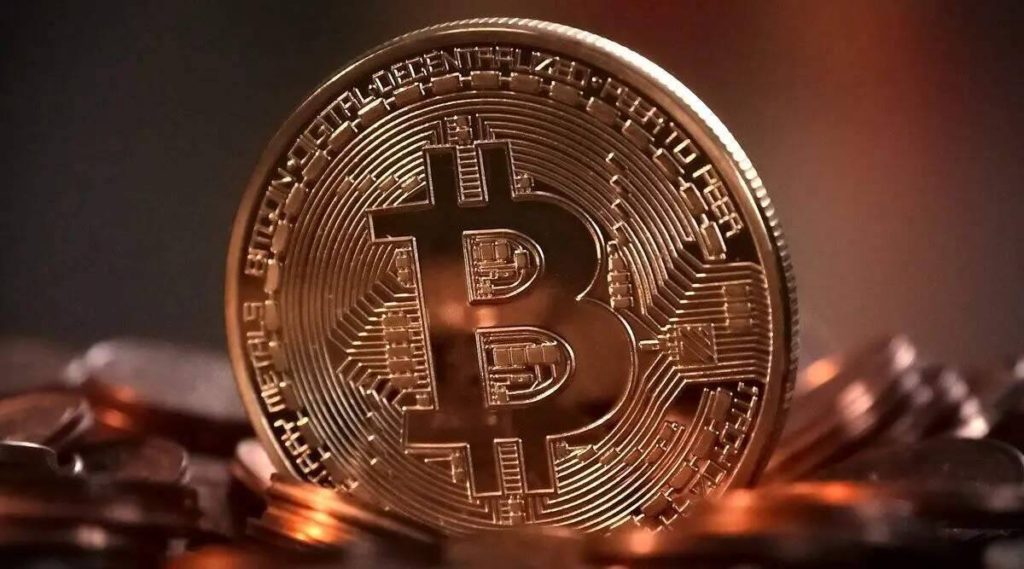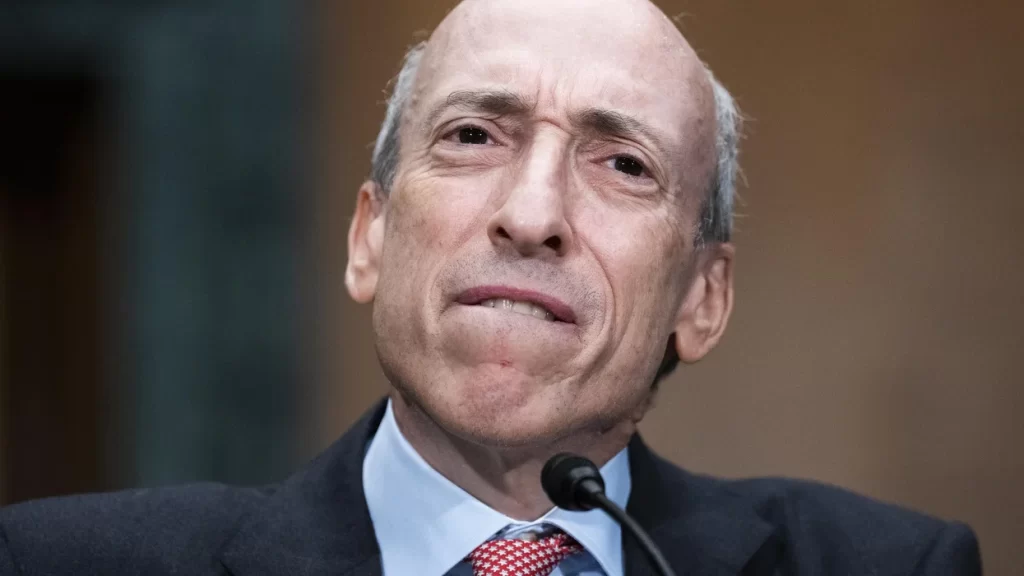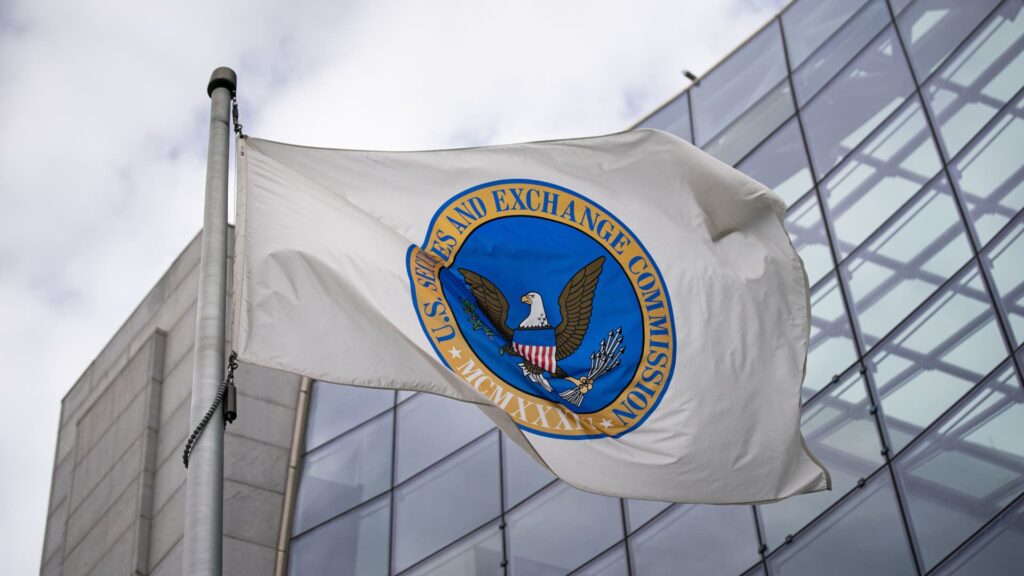According to a recent report released by cryptocurrency company Paxos, 99% of financial services firms in the United States are placing equal or greater emphasis on cryptocurrency projects in 2023 compared to previous years.
Paxos conducted a survey involving 400 executives from U.S.-based financial services companies with a minimum of five million users and either $50 billion in assets under management or $50 billion in annual payments volume.
The “2023 Enterprise Digital Asset Adoption Report” highlights the growing interest in integrating cryptocurrency technology into traditional financial services.
However, despite this strong interest, these companies are encountering various obstacles and challenges on their crypto journey.
Among those surveyed, 56% identified implementation complexity as the most significant hindrance to launching a cryptocurrency solution.
Paxos emphasized the resilience of digital assets and blockchain technology in the face of market events and economic challenges, noting that companies are increasingly recognizing the long-term value of this technology.
In response to the challenges associated with crypto infrastructure, Jonathan Anastasia, an executive at Mastercard, commented in the report that collaborating with a crypto-native firm proved beneficial. He remarked, “Infrastructure is hard.
We needed to seek out a native player in this space with the deep expertise necessary to guide the companies on this journey.”
Browse the Latest Crypto News Today
The report also revealed that 51% of respondents cited market volatility as a major obstacle to their companies’ progression in the crypto and blockchain space.
Additionally, 43% identified the financial cost of implementation as a significant roadblock.
Surprisingly, despite these challenges, fewer than 2% of the survey participants considered a lack of belief in the benefits of blockchain technology to be an impediment.
This suggests that even though companies acknowledge the hurdles ahead, they remain optimistic about the potential rewards that cryptocurrency and blockchain solutions can bring to the financial industry.
In conclusion, the Paxos report underscores the increasing interest and commitment of U.S.-based financial services companies to cryptocurrency projects in 2023.
While they face substantial challenges such as implementation complexity and market volatility, the prevailing sentiment is one of optimism regarding the long-term value and potential benefits of blockchain technology in reshaping the financial landscape.
First Trust, a prominent financial services firm, has made a notable move in the cryptocurrency space by filing for a Bitcoin (BTC) exchange-traded fund (ETF).
However, this ETF is not the typical spot ETF that tracks the performance of Bitcoin directly. On December 14,
First Trust submitted a Form N1-A filing to the United States Securities and Exchange Commission (SEC) for the launch of the First Trust Bitcoin Buffer ETF.
The primary objective of the First Trust Bitcoin Buffer ETF, as outlined in its prospectus, is to participate in the positive price returns of the Grayscale Bitcoin Trust or another exchange-traded product (ETP) that offers exposure to Bitcoin’s performance.
Unlike a spot Bitcoin ETF, which directly follows Bitcoin’s price movements, a buffer ETF employs options to achieve a predefined investment outcome.
Buffer ETFs, often referred to as “defined-outcome ETFs,” are designed to safeguard investors from losses in the event of market declines.
They accomplish this by setting a limit or buffer on a stock’s growth over a specified period, utilizing options to ensure a particular investment outcome and deliver a targeted level of protection against market downturns.
James Seyffart, an ETF analyst at Bloomberg, commented on the First Trust Bitcoin Buffer ETF, highlighting that such funds protect against a predetermined percentage of downside losses while capping potential gains.
He also anticipated the emergence of other unique strategies offering Bitcoin exposure in the coming weeks.
Browse the Latest Crypto News Today
The First Trust Bitcoin Buffer ETF represents one of the initial filings of its kind with the U.S. SEC.
At the time of writing, there are 139 buffer ETFs actively traded in the U.S. market, with total assets under management totaling $32.54 billion.
Buffer ETFs are available across various asset classes, including equities, commodities, and fixed income.
In recent years, buffer ETFs have gained significant popularity, with industry leader BlackRock introducing its first iShares buffer ETFs in June 2023.
These new products, namely the iShares Large Cap Moderate Buffer ETF (IVVM) and the iShares Large Cap Deep Buffer ETF (IVVB), have shown returns of around 5% and 2%, respectively, since their launch, according to TradingView data.
It’s important to note that despite their protective mechanisms, buffer ETFs do not guarantee complete safeguarding of investments.
Investors should be aware that there is a risk of losing some or all of their capital when investing in these funds.
Both First Trust and BlackRock acknowledge that buffer ETFs may not be suitable for all investors and do not provide principal or non-principal protection, meaning investors could still incur losses up to the entire amount of their investment.
OpenAI has officially opened applications for the second edition of its six-week program tailored for artificial intelligence (AI) startups, known as Converge 2.
This program will see OpenAI invest $1 million into each of the 15 successful participants who are chosen.
Converge 2 is an initiative accessible to individuals worldwide, targeting engineers, designers, researchers, and product builders who are utilizing AI for innovative purposes.
OpenAI’s motivation behind this startup fund is rooted in the belief that robust AI systems have the potential to catalyze groundbreaking startups and usher in a new era of innovation.
The growing ubiquity of AI tools and solutions has garnered substantial support from industry experts and investors, particularly in 2023, where generative AI startups have seen significant funding inflows from various companies and organizations.
In November 2022, OpenAI launched the first phase of its startup fund, designed to bolster aspiring founders and companies focused on developing innovative AI products.
This inaugural phase allocated $1 million in investment to each of the 12 chosen startups selected from a pool of applicants.
OpenAI’s CEO, Sam Altman, announced the Converge 2 program via an official statement.
The organization underscored the program’s significance within the AI landscape, emphasizing its commitment to pushing the boundaries of applied AI across vital domains.
READ MORE: Binance and Former CEO Challenge SEC’s Attempt to Include Guilty Plea in Ongoing Legal Battle
Notably, OpenAI will host the initial and final weeks of the program in San Francisco, with the company covering participants’ travel expenses.
Furthermore, OpenAI is actively encouraging founders from diverse backgrounds to apply, irrespective of their location outside the United States or their experience level.
The company has explicitly stated that prior experience with AI systems is not a mandatory requirement.
The application window for Converge 2 is open from December 13, 2023, through January 26, 2024.
In a related development, Kasikornbank, a private bank in Thailand, has introduced a substantial fund of $100 million, known as KXVC, aimed at investing in AI, Web3, and deep tech startups.
This fund is particularly focused on the Asia-Pacific region.
Meanwhile, French AI startup Mistral AI recently announced a successful fundraising round, securing an impressive $415 million in funding.
This funding round was spearheaded by Andreessen Horowitz, with support from the startup’s original backers, Lightspeed Ventures.
The SafeMoon token, a prominent player in the realm of decentralized finance (DeFi), has endured a dramatic 31% plunge within just five hours.
This abrupt downturn was triggered by the revelation that the company responsible for SafeMoon had submitted a Chapter 7 bankruptcy filing.
On December 14, SafeMoon initiated its bankruptcy process by officially filing for Chapter 7, also known as “liquidation bankruptcy,” with the United States Bankruptcy Court for the District of Utah overseeing the case.
Attorney Mark Rose filed the voluntary petition, and Judge Joel Marker was designated to preside over the proceedings.
A purported letter from the firm’s chief restructuring officer surfaced on Reddit, shedding light on the company’s dire financial straits.
The letter explained that the bankruptcy filing had rendered the company unable to meet its employee payroll obligations, advising employees to file claims in the bankruptcy court for unpaid wages.
This unfortunate development follows closely on the heels of the U.S. Securities and Exchange Commission (SEC) charging SafeMoon, its founder Kyle Nagy, CEO John Karony, and CTO Thomas Smith with violating securities laws. The SEC characterized their actions as part of “a massive fraudulent scheme.”
READ MORE: Wikipedia Co-Founder’s Controversial Bitcoin Comments Spark Debate in Cryptocurrency Community
SafeMoon’s token (SFM) witnessed a sharp decline from $0.000065 on December 14 at 8:24 pm UTC to $0.000045 over a five-hour period following the bankruptcy news, according to CoinGecko.
However, it displayed a brief resurgence, rebounding to $0.000061 within a rapid 10-minute span. Presently, SFM is trading at $0.00005729, reflecting a staggering 98.2% drop from its peak price of $0.0033 on January 5, 2022.
Furthermore, its once-impressive $1 billion market capitalization has dwindled to a mere $34.5 million.
Former SafeMoon supporters have expressed their frustrations on Reddit, accusing the SafeMoon developers of perpetrating a rug-pull scam.
Reddit users lamented their losses and cautioned against holding any hope for SafeMoon’s resurgence.
Santiago Melgarejo, a former nonfungible token analyst and sales specialist for SafeMoon, acknowledged that warning signs were apparent from the beginning, especially when numerous employees were abruptly laid off despite working for a month without receiving their salaries.
It’s worth noting that SafeMoon had previously fallen victim to an exploit in March, resulting in a net loss of $8.9 million.
Bitcoin could be on the verge of a bullish run in the coming weeks and beyond, thanks to shifting macroeconomic dynamics.
Popular trader Crypto Ed, the founder of CryptoTA trading group, recently noted a potential decline in the strength of the United States dollar (USD), which historically has had an inverse relationship with Bitcoin.
Recent changes in U.S. macroeconomic policy are expected to bolster Bitcoin’s prospects while exerting downward pressure on the USD.
Analysts have been optimistic about the cryptocurrency market’s performance in 2024, citing a combination of favorable macroeconomic data and encouraging signals from the Federal Reserve.
The decline in inflation is seen as a factor that could allow the Federal Reserve to reconsider its stance on interest rate hikes, leading to increased liquidity in the markets, particularly benefiting risk assets like Bitcoin.
Unfortunately, the USD is not set to benefit from this shift and has experienced a significant drop this week due to the impact of monetary tightening on inflation.
The U.S. Dollar Index (DXY) has fallen over 2% since the beginning of the week, currently hovering below $102, marking its lowest level since mid-August.
Crypto Ed shared his optimism for Bitcoin’s long-term outlook, anticipating that a weakening DXY could propel Bitcoin to new all-time highs, possibly reaching $92 for DXY.
Browse the Latest Crypto News Today
In a chart analysis, key levels to watch on the DXY in three-day timeframes were highlighted.
Economist Lyn Alden offered her perspective on the liquidity situation, noting that while global liquidity indicators had experienced some stagnation, a recent dovish stance by the Federal Reserve and the drop in the DXY might provide a boost to liquidity.
Alden also highlighted a market repricing scenario, with markets starting to factor in the possibility of the Federal Reserve lowering interest rates in 2024.
Data from the Federal Reserve itself revealed an increase in its balance sheet for the first time since August, rising by approximately $2 billion in December.
As of December 15th, BTC/USD was trading at $42,700, showing relative stability after a brief period of volatility the previous day.
Bitcoin had posted a 13% gain for December, according to data from Cointelegraph Markets Pro and TradingView.
With a weakening dollar and changing macroeconomic factors, Bitcoin enthusiasts are hopeful for new all-time highs in the near future.
Ripple, the blockchain-based digital payments company, has reaffirmed its strong endorsement of central bank digital currencies (CBDCs) through the release of a comprehensive 23-page white paper on December 14th.
This document serves as a primer, elucidating the fundamental concepts of CBDCs, their appeal, associated risks, and the hurdles obstructing their widespread adoption.
In the white paper, Ripple asserts that CBDCs hold the potential to broaden financial inclusivity, simplify cross-border transactions, and bolster the control of monetary policies.
Moreover, it highlights their pivotal role in facilitating asset tokenization—an increasingly favored method for converting tangible assets into digital tokens stored securely on the blockchain.
Nonetheless, Ripple acknowledges several impediments to the widespread acceptance of CBDCs.
A conspicuous challenge is the absence of a consistent global regulatory framework governing these digital currencies.
Additional roadblocks include the limited adoption of CBDCs among end-users, insufficient consumer education, apprehensions regarding privacy and security, the necessity for digital identity verification, interoperability issues among different CBDCs, and the requirement for offline access to transactions.
Importantly, Ripple remains optimistic, asserting that these challenges can be overcome through concerted efforts.
READ MORE: Binance and Former CEO Challenge SEC’s Attempt to Include Guilty Plea in Ongoing Legal Battle
Ripple’s involvement in CBDC development initiatives worldwide lends credibility to its advocacy.
The company is actively collaborating with over 20 global central banks in countries such as Bhutan, Palau, Montenegro, Colombia, and Hong Kong, contributing to the advancement of CBDC projects.
The white paper culminates by underscoring the tremendous potential of CBDCs, predicting that as much as $5 trillion could circulate within major economies over the next decade.
This outlook resonates with statements made by Ripple’s Vice President, James Wallis, in November.
Wallis emphasized the cost-effectiveness of CBDCs, highlighting their ability to provide financial services at significantly lower costs compared to traditional methods.
Furthermore, he stressed that CBDCs offer streamlined payment options and the opportunity to establish credit, even for individuals without prior connections to financial institutions.
In summary, Ripple’s latest white paper stands as a testament to its unwavering support for CBDCs.
It outlines the transformative possibilities these digital currencies offer for the global financial landscape, while also acknowledging the challenges that must be surmounted to realize their full potential.
Ripple’s active involvement in CBDC projects worldwide positions it as a key player in the evolution of digital currencies and the broader financial ecosystem.
United States Securities and Exchange Commission (SEC) Chair Gary Gensler has suggested a potential shift in the regulator’s approach to Bitcoin exchange-traded products (ETPs) following a recent legal decision involving Grayscale.
During an interview with CNBC on December 14, Gensler addressed the numerous pending applications for spot Bitcoin exchange-traded funds (ETFs, revealing that the SEC is currently processing “between eight and a dozen filings.”
Gensler acknowledged that the SEC had previously rejected several of these applications but indicated a potential change in their stance, stating, “So we’re taking a new look at this based upon those court rulings.”
When asked directly if he was referring to Grayscale, Gensler avoided providing a specific answer, emphasizing that the SEC operates within the framework of laws enacted by Congress and how the courts interpret them.
The SEC’s decision to deny an ETF offering from Grayscale Investments, involving its Bitcoin trust, was overturned by a federal judge in August.
Subsequently, major asset management firms like BlackRock, Fidelity, Grayscale, Invesco, Galaxy, VanEck, and Valkyrie have entered the race to launch spot Bitcoin ETFs.
READ MORE: Elon Musk Unveils Tesla’s Optimus Gen 2
Although these applications have faced delays, some analysts anticipate a potential batch approval in early January 2024.
In another interview with Bloomberg’s Kailey Leinz on the same day, Gensler avoided disclosing the number of spot Bitcoin product filings.
Instead, he highlighted recent developments in the U.S. treasury market as the agency’s current priority.
U.S. Representative Bryan Steil commented on Twitter, criticizing Gensler’s handling of the crypto-related questions:
“Chair Gary Gensler obfuscates on crypto with the press like he does at committee hearings. He does not want to explain his agency’s aggressive regulatory approach which is pushing crypto offshore.”
Bloomberg ETF analyst James Seyffart also remarked, “Gensler very rarely gives clear answers! He’s a master at hedging his words.”
In summary, SEC Chair Gary Gensler’s recent comments have raised speculation about a potential shift in the SEC’s approach to Bitcoin exchange-traded products, following recent court decisions.
This comes as several major asset managers seek approval for spot Bitcoin ETFs, though the regulatory landscape remains uncertain.
As Bitcoin exchange-traded fund (ETF) issuers work on their filings with the United States Securities and Exchange Commission (SEC), the regulator is standing firm in its demand for a “cash” redemption model instead of alternatives proposed by issuers like BlackRock.
On December 14, finance lawyer Scott Johnsson revealed that ETF applicants Invesco and Galaxy have now adopted a cash creation and redemption model for their ETFs.
Their updated S-1 filing with the SEC stated, “The trust expects that creation and redemption transactions will take place initially in cash.”
The SEC has been advocating for a cash redemption model for spot Bitcoin ETFs, while some applicants, including BlackRock, have suggested an “in-kind” model.
So, what’s the difference? A cash creation model involves authorized participants depositing cash equivalent to the net asset value of the creation units.
READ MORE: Blockchain Technology Emerges as a Key Player in the Battle Against Climate Change
The fund uses this cash to purchase the underlying asset, such as Bitcoin. In contrast, the in-kind creation model involves participants depositing a basket of securities that match the ETF’s portfolio, allowing the fund to issue creation units without immediately selling the securities for cash.
The cash model may result in slightly wider spreads and potential tax inefficiencies but offers greater flexibility for fund participants.
Bloomberg senior ETF analyst Eric Balchunas believes the latest filing indicates the SEC’s determination to allow only cash-created ETFs initially.
He mentioned that many were waiting to see if BlackRock could persuade the regulator to consider in-kind creation, but analyst Seyffart suggests that most issuers may eventually adopt the cash creation and redemption model.
In late November, BlackRock met with the SEC to discuss ETF share creation and redemption mechanisms, presenting a revised hybrid in-kind model that favored this method over cash creations.
Bitwise has also shifted towards cash-only creation and redemption since December 4, despite initially having both in-kind and cash options in their documents.
The SEC recently delayed its decision on approving a spot Ether ETF for Invesco and Galaxy Digital.
Representatives from asset managers like BlackRock, Grayscale, and Fidelity have been meeting with the SEC to finalize details for their spot BTC products, with analysts anticipating batch approvals in early January.
Solana’s crypto phone has witnessed a surge in demand from Memecoin enthusiasts following a remarkable price surge of over 1,100% in the past month for the Solana-based Memecoin, Bonk (BONK).
Since the release of the Solana phone on May 8th, new owners have been eligible for a generous 30 million BONK airdrop.
However, the recent surge in the token’s value has created an intriguing arbitrage opportunity for potential buyers.
In a December 15th post on X (formerly Twitter), Raj Gokal, co-founder of Solana, revealed that Solana phone sales had surged by more than 10 times in the last 48 hours, hinting at the likelihood of them selling out before the new year.
This astonishing demand can be attributed to the increased value of the 30 million BONK airdrop, which now amounts to an impressive $877 – $278 more than the phone’s current price of $599.
This situation has created an unusual arbitrage opportunity for crypto enthusiasts.
Bonk’s extraordinary 1,100% gain in the past 30 days, as reported by CoinGecko, led to Bonk surpassing the market cap of its rival Memecoin, Pepe. Memecoins are generally characterized by their volatility and instability.
The remarkable surge in sales even prompted Anatoly Yakavenko, another Solana co-founder, to suggest increasing the price of the Saga phone.
The Saga’s price had been reduced from $999 to $599 in August due to declining sales.
READ MORE: Wikipedia Co-Founder’s Controversial Bitcoin Comments Spark Debate in Cryptocurrency Community
A Solana spokesperson confirmed that Saga sales had exceeded “millions of dollars” in the past 48 hours, showcasing the impact of community projects on the device’s success.
In response to the overwhelming demand, Solana Mobile announced restrictions, limiting future orders to one mobile device per household.
This frenzy of sales signifies a significant turnaround for the Saga phone, which had been struggling for an extended period.
In a December 5th appearance on Laura Shin’s Unchained Podcast, Yakovenko had expressed doubts about the device’s ability to sell 50,000 units and admitted to using his Solana Saga primarily as an “NFT phone.”
Ultimately, the potential profit from this trade opportunity hinges on the assumption that BONK’s price will either remain stable or rise by the time the Solana device is in the hands of its users.
The volatile nature of Memecoins, with rapid price fluctuations, adds an element of uncertainty to this opportunity.
Gemini Earn creditors are up in arms over a proposed reorganization scheme that could significantly diminish the value of their expected Bitcoin payouts, potentially reducing them to only 30% of their current market value.
In a recent communication on X (formerly known as Twitter), Gemini Trust announced that it had dispatched an email to creditors on December 13, outlining a reorganization plan that is now open for voting.
According to this proposed plan, creditors will be entitled to receive a payout equivalent to the balances in their Earn crypto accounts as of January 19, 2023.
This date coincides with the bankruptcy filing by Genesis Global Capital, Gemini’s cryptocurrency lending partner.
Critics, including Bloomberg’s exchange-traded fund analyst, James Seyffart, have characterized this plan as “harsh” considering that Bitcoin and Ether were valued at just $20,940 and $1,545 at the time of the bankruptcy filing. At present, these assets have surged to $42,750 and $2,250, respectively.
In a worst-case scenario where creditors receive a 61% recovery, each Bitcoin held in an Earn account would be redeemed for only $12,773, amounting to a mere 30% of its current market value.
READ MORE: Senator Elizabeth Warren Gains Additional Senate Support for Crypto Anti-Money Laundering Bill
The proposal has elicited a strong negative response from Gemini’s community on X, with many urging creditors to vote against it.
One user, Andrew Aleid, expressed his disapproval, labeling it a “disgrace” and accusing Gemini of theft.
Another commenter, Leslie, castigated the platform for its deception and demanded full reimbursement, questioning Gemini’s credibility in light of past reassurances that customers wouldn’t be exposed to counterparty risk from Genesis.
BC, another X user, advocated for full repayment, asserting that anything less would be “unacceptable.”
Gemini Earn was a program that allowed users to earn interest in cryptocurrencies, and the platform had transferred substantial funds from Genesis to support it before Genesis declared bankruptcy. Now, Gemini is pursuing a $1.6 billion recovery from Genesis on behalf of Earn users.
Creditors have until January 10, 2024, at 4 pm Eastern Time to accept or reject Gemini’s proposed plan. Should it be approved, the bankruptcy court overseeing the case will make its final decision on February 14, 2024.













